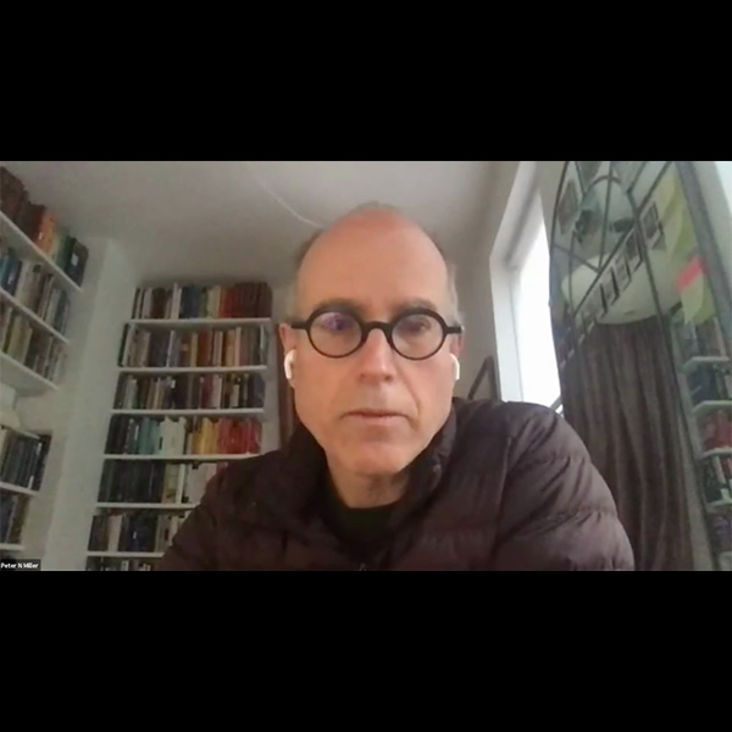Over the summer, Bard Graduate Center merged its public-facing Gallery with its Academic Programs division, and former Gallery director Nina Stritzler Levine assumed the roles of professor of curatorial practice and director of the Focus Project (exhibitions curated by faculty members, arising from their research). We recently discussed the new structure with BGC Dean Peter N. Miller.
BGC: How did this change come about?
PNM: BGC’s director, Susan Weber, has increasingly talked about this as a single institution, a single academic venture that researches decorative arts, design history, and material culture. This is one of the conclusions of our 25th anniversary, that we wanted more institutional integration. I see this change as making that idea concrete.
BGC: BGC’s Gallery and Academic Programs have always been closely aligned. What are the advantages of this deeper integration?
PNM: The uniqueness of BGC is that it’s not a museum. It’s not an academic department. It’s an institute with a single focus that does its work—studying the human past through its material remains and training the next generation of people to continue that study—in a number of styles, formats, and venues. The training we provide requires not only reading, but doing.
BGC: Do you think visitors to the Gallery will notice a big difference?
PNM: It may not make a difference at all. The content of our exhibitions has always varied from season to season, but to my mind, there is a tremendous continuity from exhibition to exhibition, not at the level of what is shown, but at the level of how we do it. And that’s because they are research projects. We choose topics that are unknown or misunderstood, where we feel we can contribute. So it’s very much the intellectual practice of the institution that’s manifested in these shows.
BGC: What do you imagine the lasting impacts of the deeper integration of the Gallery and Academic Programs will be?
PNM: I could see a future where in a more systematic way we entirely reorient the institution around projects. If we wanted to think of ourselves that way, we could organize five- or six-year units where we work on a couple of different topics with teaching, doctoral admissions, postdocs, and publications, as well as exhibitions, focusing on those topics. It’s what now typically happens in Europe where funding packages come from centralized grant competitions that fund everything. It’s very different from the American system.
BGC: What are some past exhibitions that are most reflective of the direction you’d like to see the Gallery’s research projects move in the future?
PNM: I don’t really think it’s so much the content. As research projects, almost everything we’ve done breaks ground. The cycle of British design shows from Beckford through “Athenian” Stuart, Hope, and Kent; the alternative modernisms from the early Le Corbusier through Aalto; the Circus in America and John Lockwood Kipling—these shows transformed the research landscape in their fields. The upcoming project on majolica will surely do the same. Thinking about the exhibitions as research projects means we should have full integration, so that with each exhibition, as it is formulated, there are workshops that are open to public view where people discuss how the exhibition is made, and there should be teaching around it at every stage of its development.
BGC: What would you say the Gallery or exhibition as research model offers to BGC students?
PNM: You know, to the extent that “exhibition as research project” doesn’t really happen academically anywhere else because of the inadequate—and where it exists, superficial—interrelationship of academic teaching and exhibition-making in museums, we will be offering something unique to our students. The whole “cradle to catalogue” of an exhibition life cycle will happen in their view. They will not think of an exhibition as a totally different species of scholarly communication.
BGC: How does Nina joining the faculty enrich the faculty or the experience of BGC students?
PNM: Our students are interested in making exhibitions and seeing how exhibitions are made. I think that’s part of why the Focus Project has been such a success. It’s of incalculable value to have somebody with all of Nina’s experience making exhibitions actually in the classroom working with students. I’m really very excited to have her in a position to do that. The academic content she works on is also particularly interesting for our students. It will be really great for them to be able to work with somebody whose knowledge focuses on this crucial moment and the relationship between history of design, architecture, and exhibitions.













